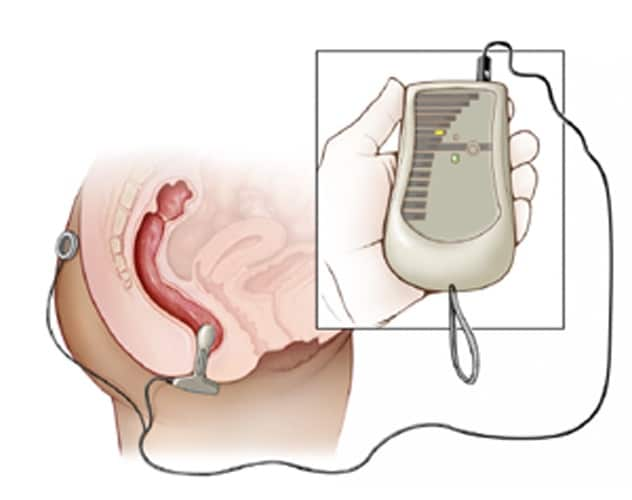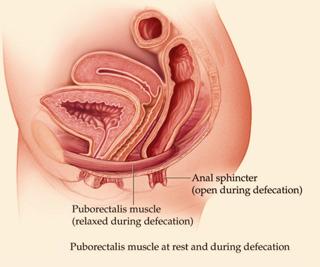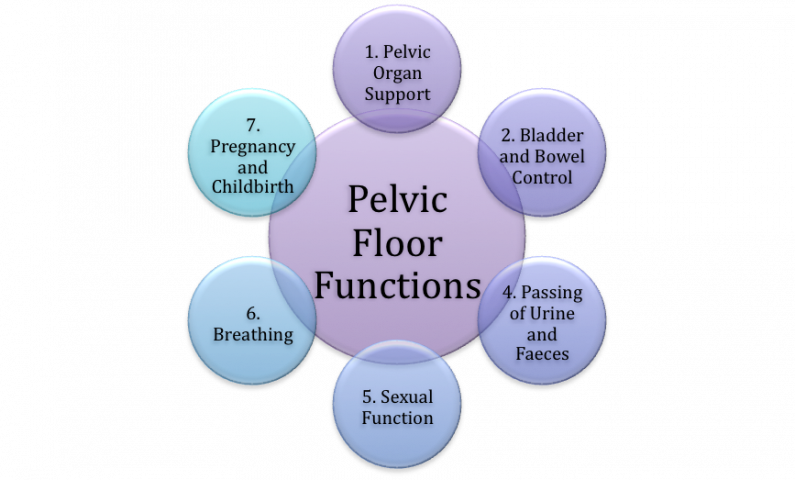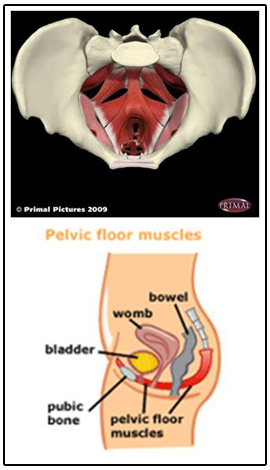The current diagnostic criteria (rome iii) includes inadequate defecatory propulsion as another cause of a defecation disorder besides dyssynergic defecaton. Pelvic floor dyssynergia is a condition in which the external anal sphincter and the puborectalis muscle contracts rather than relaxes during an attempted bowel movement.

Pelvic Floor Dysfunction - Physiopedia
The impact of sci on bowel is less severe since bulk of the bowel up to transverse colon is

Pelvic floor dyssynergia causes. The pelvic floor is composed of a group of muscles that span. Dsd can only occur in the presence of a neurologic pathology affecting the central nervous system. Other names for this condition include anismus, pelvic floor dysfunction, paradoxical puborectalis dysfunction,.
This is when the pelvic floor contracts to move the bowels out but the anal sphincter does not open properly. To determine if there was a singular cause that led to your pelvic floor dyssynergia, or if multiple events played a part, your gp will discuss your medical history. If your pelvic floor dysfunction is the result of a rectal prolapse — a condition that causes the rectal tissue to fall into the anal opening —.
Pelvic floor muscle tightening results in increased straining and may even be painful. An example of anorectal dysfunction that can contribute to constipation is a condition called pelvic floor dyssynergia (also referred to as anismus). So when on the toilet the pelvic floor muscles are creating a serious kink on the rectum and it’s very difficult to push the bowel motion out, without straining, pain or causing anal fissures (little tears in the anus).
Dyssynergic defecation is a health condition with difficulty passing stool due to problems with the muscles and nerves of the pelvic floor. What is the cause of pelvic floor muscle spasm? It has been sometimes also referred to as anismus.
In the past the understanding of dd was poor. Your pelvic floor includes muscles and connective tissue that support. What is pelvic floor dyssynergia?
It is often a habit of an ineffective posture and behaviour you have when you try and have a bowel movement. How to fix pelvic floor dyssynergia. The term pelvic floor dyssynergia is commonly used interchangeably with the terms anismus, dyssynergic defecation or puborectalis syndrome.
This makes it difficult to have a bowel movement. Anal sphincter dyssynergia can be caused by obstructions, but mostly improper relaxing of the anal sphincters or pelvic floor muscle during defecation. Contraction of the pelvic floor or urethral sphincter during voiding in a neurologically intact patient should be characterized as “dysfunctional voiding” rather than dsd ().the diagnosis is made through urodynamic study with or without fluoroscopy via.
Patients with pfd commonly present with chronic constipation. It is marked by the failure of pelvic floor muscles to relax, or a paradoxical contraction of the pelvic floor muscles, with defecation. There is the sensation of incomplete emptying of the rectum.
Anismus or dyssynergic defecation is the failure of normal relaxation of pelvic floor muscles during attempted defecation. The pelvic floor are the muscles that attach to the pelvis in the abdomen. It is marked by the failure of pelvic floor muscles to relax, and or lead to a paradoxical contraction of the pelvic floor muscles on attempted bowel evacuation.
It can be caused by physical defects or it can occur for other reasons or unknown reasons. Pelvic floor dyssynergia is a behavioural disorder that is the result of an unintentional habit. Normal bowel movements involves relaxation of both of these muscles.
Pelvic floor dyssynergia and pelvic floor dysfunction are caused by impaired relaxation of the external anal sphincter, impaired relaxation of the. Pelvic floor muscle spasm can be either primary ( there is no underlying cause) or secondary (there is an identifiable underlying cause). In constipation, the pelvic floor muscles are tight and overactive and do not know how to relax.
What causes pelvic floor dyssynergia? Pelvic floor dysfunction is the inability to relax and coordinate the pelvic floor muscles to have a bowel movement. It can occur in both children and adults, and in both men and women (although it is more common in women).
Pelvic floor dyssynergia means that your pelvic muscles are contracting and closing the rectum rather than relaxing and opening the sphincter when you attempt to have a bowel movement. When you have pelvic floor dyssynergia (pelvic dyssynergia), the muscles in your pelvic floor become uncoordinated. One of the most common causes of constipation is when the muscles of the rectum and/or pelvic floor are not working properly when attempting to pass stool during a bowel movement.
Causes are generally unknown, but possible factors include pregnancy and childbirth, a history of passing hard or painful stool, and psychological factors, including a history of abuse. Been called as pelvic floor dyssynergia (pfd). This can be caused by trauma, pregnancy or age.
9 a study showed that patients with inadequate defecatory propulsion or who cannot appropriately increase propulsive forces with or without contraction or less than 20% relaxation of anal sphincter during. This condition is referred to as dyssynergic defecation. It can result in chronic constipation.
Anna Physios

The Role Of Pelvic Floor Muscles In Male Sexual Dysfunction And Pelvic Pain - Sexual Medicine Reviews

Pdf Pelvic Floor Dysfunction And Biofeedback In The Pathophysiology And Treatment Of Constipation Semantic Scholar

Unique Intensive Curriculum Helps Patients Retrain Pelvic Floor Muscles - Mayo Clinic

Constipation And Pelvic Floor Dyssynergia - What Do They Have In Common - The Pelvic Expert

Abdominophrenic Dyssynergia And Pelvic Floor Dysfunction Zion Physical Therapy

Anismus Pamela Morrison Pelvic Pain Physical Therapist Pc

Constipation And Pelvic Floor Dyssynergia - What Do They Have In Common - The Pelvic Expert

Dyssynergia - An Overview Sciencedirect Topics

Constipation And Pelvic Floor Dyssynergia - What Do They Have In Common - The Pelvic Expert

Biofeedback And Pelvic Floor Disorders - Conservative Treatment - Pelvic Floor Disorders Surgical Approach

Pelvic Floor Dysfunction A Treatment Update Page 3

Pelvic Floor Dysfunction - Gastrointestinal Society

Published Results Of Treatment Of Pelvic Floor Dyssynergia With Bt Download Scientific Diagram

Why Your Pelvic Floor May Be The Cause Of Your Digestive Problems

Pelvic Floor Dysfunction - Physiopedia

Pdf Systematic Review The Role Of Pelvic Floor Muscles Dysfunction In Constipation Semantic Scholar

Pdf Physical Therapy Management Of Pelvic Floor Dyssynergia

Pelvic Floor Muscle Dysfunction Pfmd Pamela Morrison Pelvic Pain Physical Therapist Pc